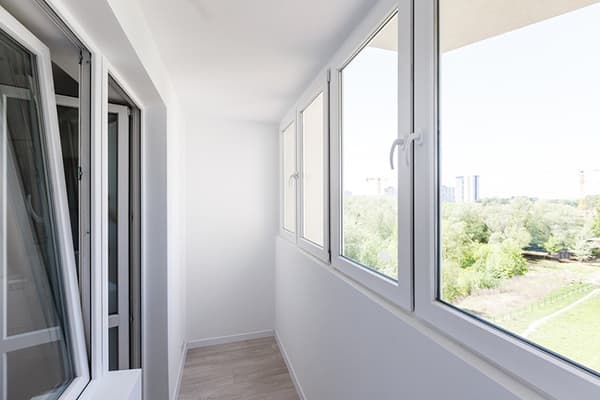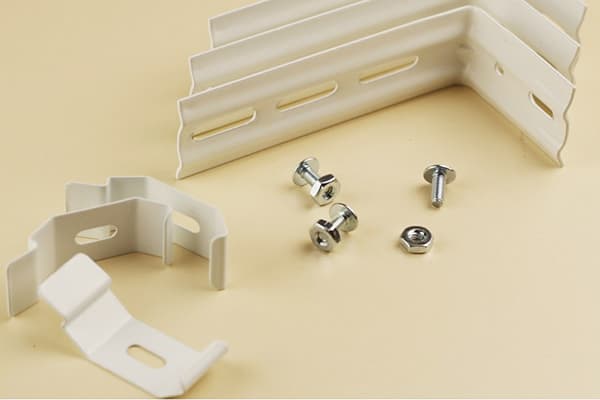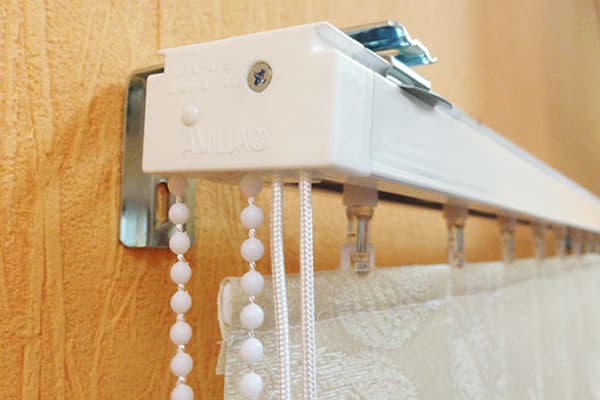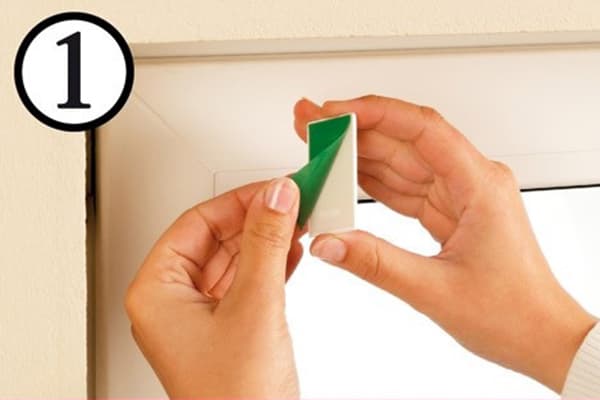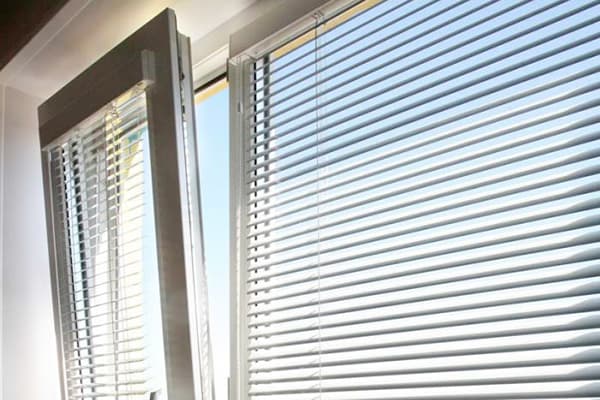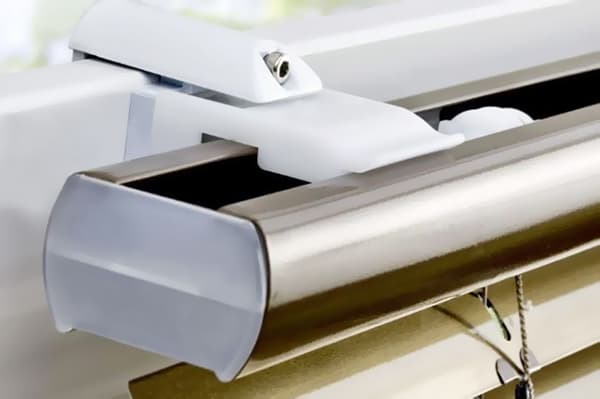How to hang horizontal or vertical blinds on plastic windows: options with and without drilling
Content:
To hang blinds on plastic windows, it is not necessary to invite professional installers. Modern models can be attached to a plastic window using special brackets. There are also varieties that hang without drilling. Each method has certain advantages (as well as weaknesses). Let's figure out which option is better and how to implement it on our own.
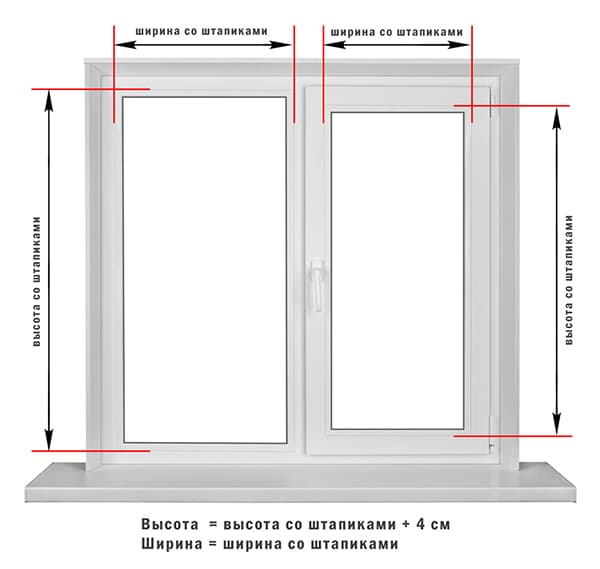
How to take measurements correctly?
To install the brackets and attach the blinds to them without unnecessary fuss, it is important to know the correct dimensions. They depend on how exactly you plan to attach the entire structure to the windows.
There are several places where you can attach blinds:
- In the window opening. In this case, we subtract 4 cm from the distance between the slopes, and from 1 to 3 cm from the distance between the lintel and the window sill. Then the slats will not scratch along the window sill when opening, and the entire structure will look harmonious in the opening.
The window opening can have a trapezoidal shape. Then it will be narrower at the glass and wider at the edge of the window sill.To prevent the blinds from being too narrow or too wide, mark the place where the measurements were taken.
- On the doors. In this case, a separate structure is attached to each sash so as not to interfere with opening and closing the window. To get dimensions, measure the height and width of the glass. Then add an additional 3 cm to the width, and 5 cm to the width. Then the slats will completely cover the light opening.
- Fixing to walls or ceiling. In this case, measure the distance between the brackets at the selected level. The width must be at least 10 cm greater than the width of the opening (more is allowed). The height of the blinds is determined based on personal preference. There are two options: the slats can hide the window sill, or not reach it by 1–2 cm.
Do not forget to write down all measurement results immediately.
Although horizontal and vertical structures are very different in appearance, the metering technology is the same.
Preparatory work
Preparation begins with a careful inspection of the purchased blinds:
- With instructions in hand, check that all parts are included.
- Make sure the cords are not tangled.
If you forgot to include one of the parts in the delivery set, you will no longer be able to assemble the blinds. It is better to immediately contact the supplier and replace the defective kit rather than waste time trying to find something to replace the missing or defective part.
You also need to prepare the window and room before installing blinds:
- Remove flowers and other things from the window - ensure access.
- If during installation you have to drill holes to install the brackets, you should cover the window sill and several meters of the floor next to the window with newspapers or plastic film.
The final part of the preparation concerns the tools:
- Make sure you have everything you need at hand, the drill cord is long enough to complete the intended task, and there is reliable support for your feet.
- Do not work standing on stools or unstable furniture. Better prepare a stepladder or sawhorse.
Required materials and tools
The set of tools will depend on the chosen mounting method. To attach lightweight blinds to plastic windows without drilling, just scissors and a roll of double-sided tape are enough. But if you plan to drill into the walls to install brackets, you will need more tools:
- drill and drill for it (usually take No. 6);
- dowel and hammer;
- Phillips blade screwdriver.
For each method, you will also need a tool for disassembling the blinds themselves (screwdrivers), as well as a pencil, tape measure and a building level for marking.
Step-by-step instructions for attaching horizontal blinds
Lightweight structures are attached directly to the frame using small self-tapping screws screwed into a plastic profile. The disadvantage of this method is the holes remaining after installation. If you need to remove the blinds in the future, the marks from the screws will spoil the look.
You cannot drill holes for self-tapping screws close to the glazing bead: vibration may cause the glass to crack. Therefore, it is very important to correctly mark the place for each bracket and not make a mistake when choosing blinds.
The work algorithm looks like this:
- You need to attach the mounting brackets to the blind body.
- Place the housing so that the lamellas on both sides extend the same distance beyond the glass. In this case, you need to make sure that the canvas does not interfere with turning the handle, opening the window sash, or setting the window for ventilation.
- Level the blind body horizontally using a bubble level.If this is not done, the mechanism may become distorted.
- Mark with a pencil the places where the brackets will be attached to the frame. Then remove the brackets from the body, attach them individually to the frame and mark the position of each hole.
- Drill holes for the screws with a drill number 2 or 2.5 (the plastic from which the frames are made may crack if you try to screw in the screws without pre-drilled holes).
- Screw the mounting brackets into place and insert the blind body into them until it clicks. We drill holes for the lower clamps and screw them onto the underside of the frame.
The last step is to reinstall the end caps and make sure that the blind mechanism works properly and that the slats do not interfere with the opening of the shutter.
If there are still “extra” holes in the frame, white silicone sealant will hide them. After it dries, the frame will perform its functions well. Acrylic sealant is not suitable: it quickly turns yellow and loses its appearance.
Step-by-step instructions for attaching vertical blinds
Work begins with markings. The order of operations is the same as in the previous version: we attach the brackets to the body, attach the body to the wall or ceiling, and mark a place for each hole. But there are also specific features:
- Since blinds with vertical slats are a heavier design, it is worth hanging them on a full set of fasteners. If the cornice is longer than 2 m, an additional bracket in the middle will be needed for the two side supports.
- To drill holes in concrete, you will need a thicker drill bit (No. 6) with pobedit tips on the tip.
- The included dowels may not be long enough for secure fastening. Therefore, it is worth replacing them if necessary.
Having marked the holes, drill them with a drill and insert a plastic plug into each. Then we screw the brackets and snap the housing into them. The final step is to install the side plugs and check the operation of the mechanism. After this, weights are inserted into the lamellas and connected with chains.
Fasteners without drilling
There are several reasons to choose drill-free fasteners:
- reluctance to tinker with a drill;
- lack of power tools on the farm;
- impossibility of drilling windows or walls for any reason (for example, a prohibition specified in the rental agreement).
First of all, read the instructions for the blinds you purchased and make sure that they can be secured with double-sided tape. Typically, such a mount is only suitable for the lightest models, because its reliability leaves much to be desired.
If you are sure that you can do without drilling, proceed as follows:
- Place a strip of double-sided tape on the back side of the blind body (before this, you need to remove the slats from the body for adjustment).
- Try the block against the wall one last time, mark its location with a pencil if necessary.
- Peel off the protective film from the other side of the tape and firmly press the block into place. Reliable adhesion will occur in 1–2 minutes.
- All that remains is to install the adjustment strips and slats in place.
In the future, you should be careful when cleaning and using the blinds so as not to tear them off with too much force.
Try to cut out a piece of double-sided tape as accurately as possible to the size of the back of the case. If the adhesive tape sticks out on the sides, it will ruin the look. A piece of tape that is too small will not provide reliable adhesion.
Useful tips
When choosing blinds, pay attention to the material.For example, blinds with aluminum slats are perfect for the kitchen: they do not catch fire even when exposed to open fire. Plastic is better suited for the bathroom, since it is not affected by dampness. And for living rooms, fabric or wooden ones are optimal.
If you plan to install blinds on several windows, each opening and each sash must be measured separately. Although they look the same to the eye, the difference in length or width may be sufficient for the canvas to begin to interfere.
It is better to double-check each measurement at several points. For example, to measure the width, at least three measurements are taken: under the ceiling, at the window sill and in the middle. For height, two measurements are enough (right and left), but a third won’t hurt. It is almost impossible to shorten or extend manufactured lamellas. The more accurate the dimensions specified in the order, the easier it will be to hang the canvas on the window and then use it.
Alternative types of installation
Cassette blinds consist of a box with a mechanism and side guides. They are attached to the frames. The box is attached to the top of the frame using screws, and the side runners are glued to the sides with double-sided tape. All that remains is to unfold the canvas, make adjustments and secure the accessories.
For roller blinds, the installation principle is the same as for horizontal blinds. You can hang them on the sash or in the window opening.
We hope that our advice allowed you to imagine all the stages of ordering and installing blinds on a plastic window. If you do all the operations carefully, it’s not at all difficult to handle the installation yourself!
